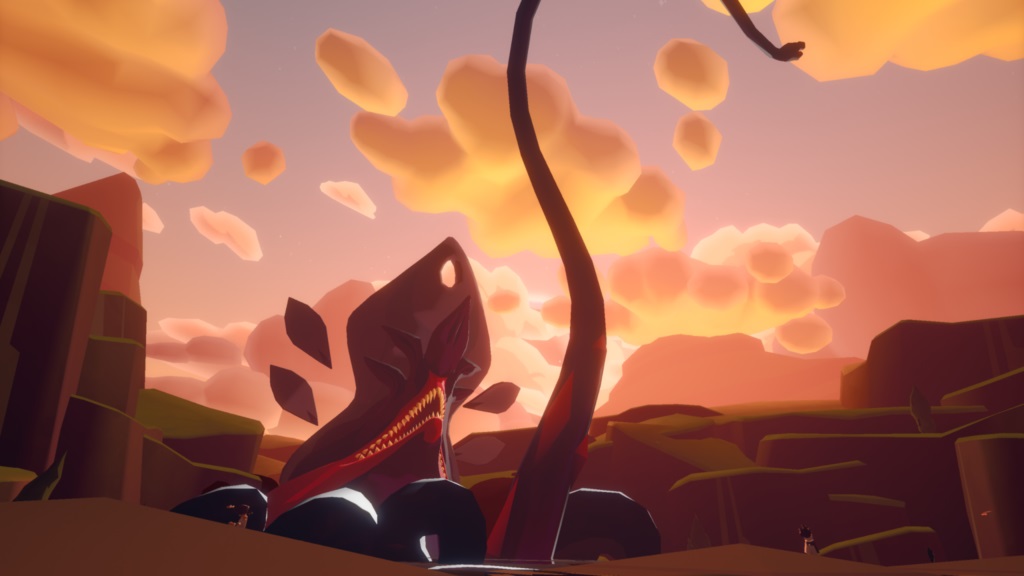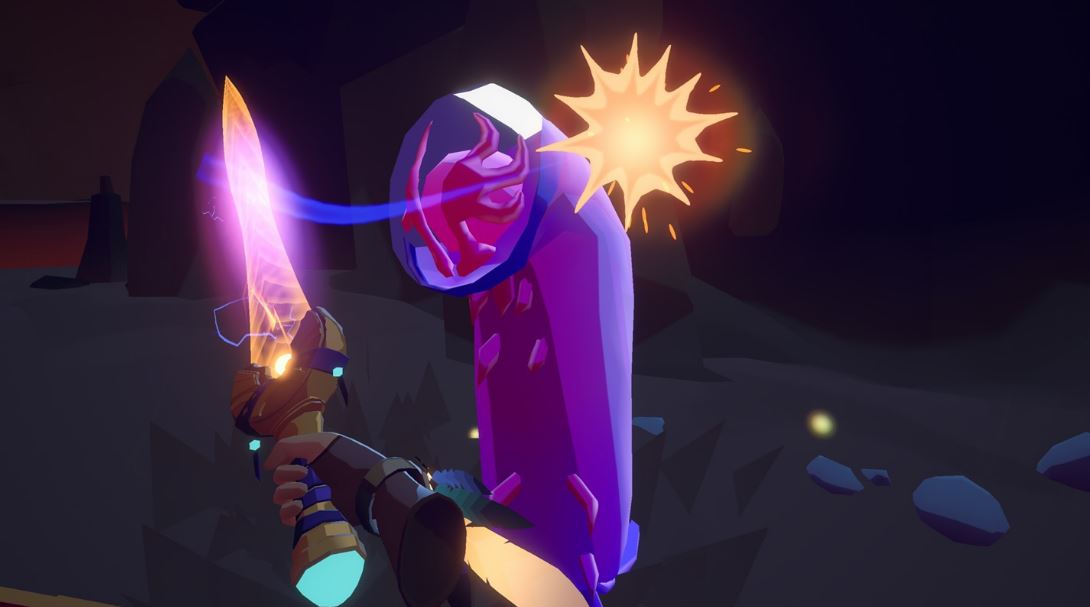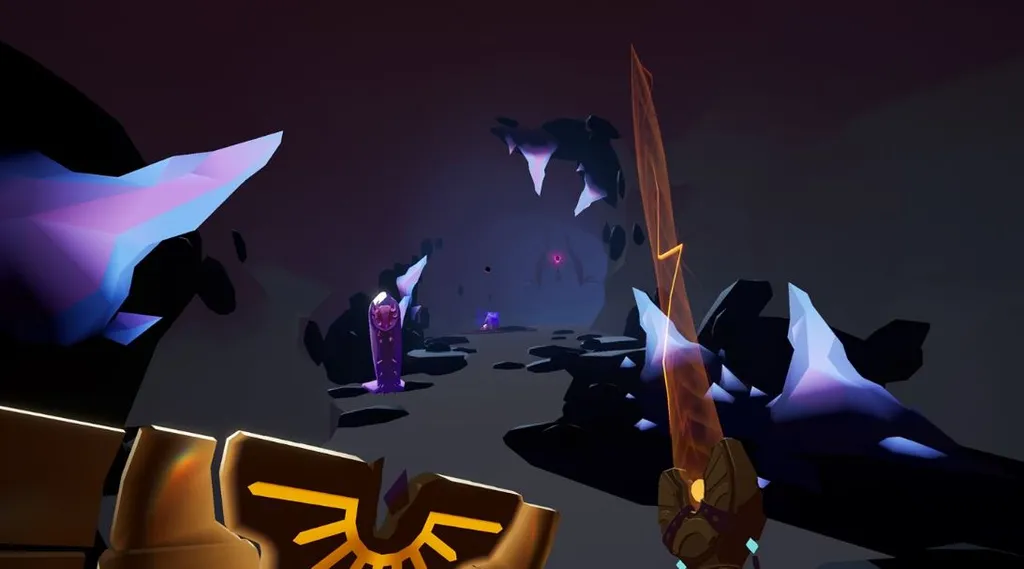Journey of the Gods is a delightful game. that takes heavy inspiration from The Legend of Zelda franchise.
Turtle Rock Studios has crafted a polished and well-rounded action adventure that takes you across a variety of biomes wielding a sword, shield, and crossbow as you battle back dozens of dangerous beasts. While technically playable seated or standing stationary, moving around in full roomscale is when the game really comes alive.
After the first hour or so, once you’re used to the rhythm of switching between your crossbow and sword/shield setup, is when Journey of the Gods starts to click. There are lots of puzzle elements here, but not in the traditional Zelda-sense of moving blocks and hitting switches that often. Instead, problems are more environmental.
The core differentiating gameplay gimmick in Journey of the Gods is that you can grow to become a towering God that looks down at the world and influences things around you. That means growing and shrinking trees to open up or close passages, throwing down lightning bolts, and more. This functionality is used in combat, to a degree, but is mostly about puzzle solving. Energy is dispersed around levels to collect and power up your God-power gauge.
In this way it’s a bit like two games mashed together — a lite God-mode puzzle game and a more involved first-person action game. The first-person bits reminded me a lot of the early days of VR like Vanishing Realms, but instead of being over in an hour you can stretch this one out to six or more depending on how much of a completionist you are.
Scattered around each level you’ll find upgrade tokens for your sword, shield, and crossbow that can be exchanged back at the hub world to increase each item’s power. I’d have liked for a more diverse progression system of some kind other than just new God powers, such as new weapons, or items, but that’s mostly just the Zelda fan in me. The developers did a good job of injecting some unique flair here.

Visually Journey of the Gods isn’t going to turn a lot of heads. It’s got a very flat, stylized design that, while consistent and well-done, will likely be off-putting to some. It lacks the pop and personality of something like Wind Waker, but still evokes a similar sense of charming style. More than anything I found myself a little underwhelmed by creature designs and the lack of faces on characters. Windlands 2 has a nice, similarly stylized visual design but it came across as much more lively despite there actually being fewer NPCs to interact with in that one.
Journey of the Gods also has a minor space issue. A lot of the open space in levels feels under-utilized, almost as if levels are large for the sake of it rather than out of necessity. However, the few times I played the game on Quest outside on my backyard patio or in my garage where I really had room to move, the larger levels were certainly nice to run around in.
The sword and shield combo felt really great and it makes me hope to see more games with this gameplay setup on Quest soon. Alongside Apex Construct, it’s one of the few games on Quest that offers a solid front-to-back single-player campaign full of combat. I’ve played plenty of sword fighting games on wired PC headsets, but being able to spin and slash without worrying about yanking the cord out of your PC is really great.

Journey of the Gods is a simple, yet charming game. It doesn’t try to reinvent the wheel in terms of action adventure games in VR go and it certainly won’t blow your mind with its visuals, but what we’ve got here is a well-made and tightly designed adventure with hours of content to explore. I’d love to see this turned into a franchise so we could experience a bigger, better, and bolder sequel. As it stands, Journey of the Gods is a delightful and fun game worth adventuring with.
Journey of the Gods is now available on Oculus Quest and is expected to be released on Oculus Rift as today. The game costs $29.99 and does support cross-buy across Quest and Rift. Check out these official review guidelines to find out more about our process.


























